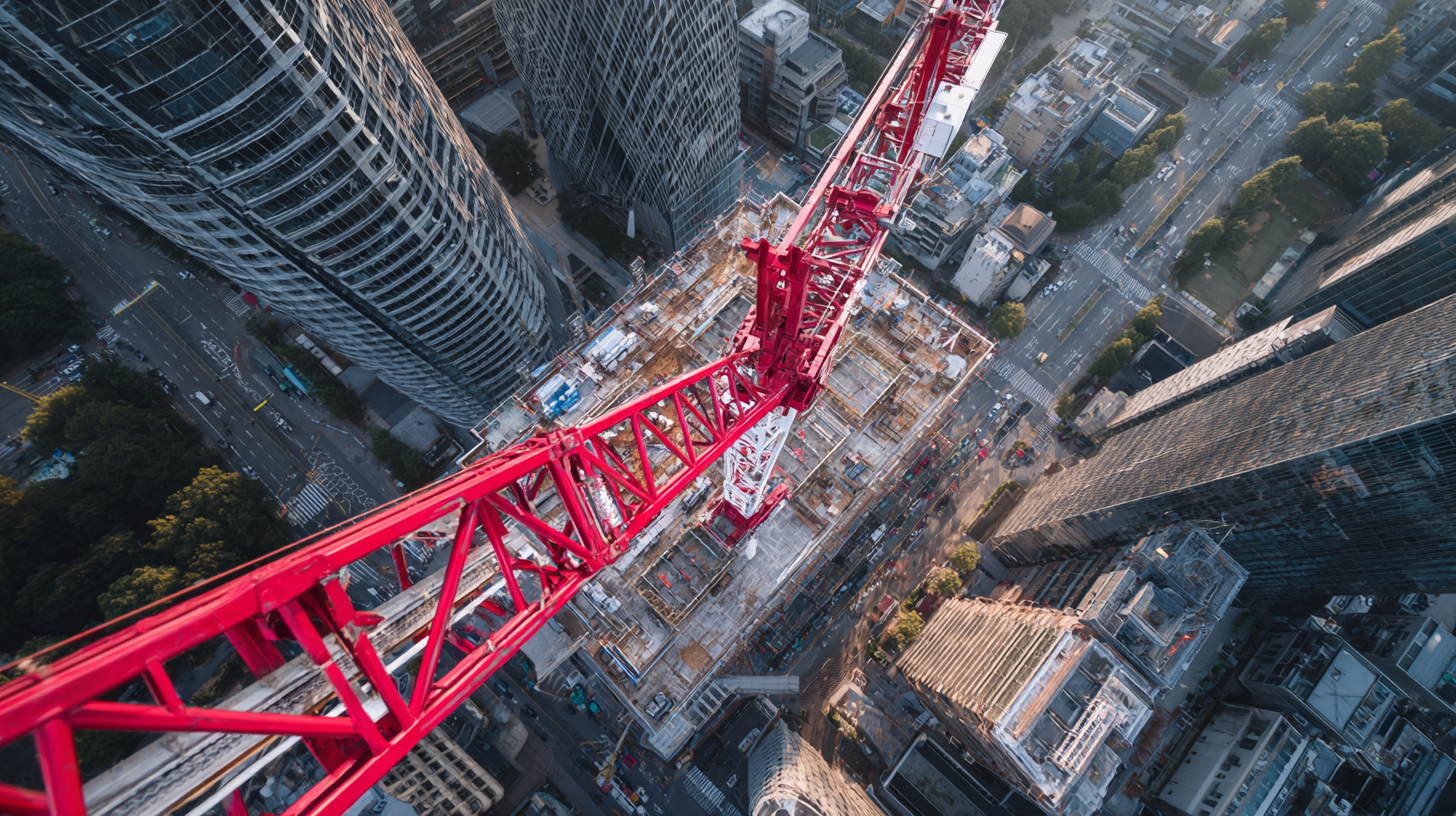The global tower crane market is poised for significant transformation in the coming years, fueled by technological advancements and increasing demand for safety and efficiency in construction projects. According to a recent industry report, the market for tower cranes is projected to reach USD 15 billion by 2025, growing at a CAGR of 4.6% between 2020 and 2025. This growth is driven by key factors such as urbanization, infrastructure development, and a shift towards more sustainable construction practices.

Chinese manufacturers are leading this evolution with innovative designs and upgraded quality, thereby enhancing their competitiveness in the global market. As we look towards 2025, the landscape of tower cranes will likely reflect these trends, showcasing a commitment to excellence and meeting the diverse needs of construction across the world.
The tower crane market is poised for substantial growth leading into 2025, with projections indicating an increase in market size from approximately USD 36.9 billion. This upward trend is primarily fueled by the surge in infrastructure projects across North America, Europe, and Asia. The increasing urbanization and the demand for high-rise construction further amplify the need for efficient lifting solutions, driving innovations in tower crane technology.
One noteworthy trend in this sector is the ongoing advancements in automation, which have revolutionized tower crane operations over the past two decades. Despite significant progress, there remain critical knowledge gaps and limitations regarding the full implementation of automation in tower cranes. As the industry pushes towards 2025, insights from recent studies suggest a need for further research and development to address these challenges, ensuring that emerging technologies are effectively integrated to enhance operational efficiency and safety.
Overall, as the global tower crane market anticipates steady demand growth through 2035, the focus on innovative solutions and technological advancements will be essential in meeting the rising needs of the construction industry.
The global tower crane market is projected to experience significant growth, anticipated to reach USD 5.4 billion by 2025, according to a recent report by MarketsandMarkets. This growth can be attributed to several key drivers, including the rapid urbanization and infrastructure development activities in emerging economies. For instance, countries in the Asia-Pacific region are expected to dominate the market, contributing to over 40% of the overall market share due to extensive construction projects, particularly in China and India.
Moreover, advancements in technology are set to serve as a catalyst for innovation within the tower crane sector. The integration of IoT and smart technologies into construction processes is likely to enhance efficiency and safety, reducing operational costs by up to 20%. Industry players are increasingly investing in R&D to develop advanced tower crane models that incorporate automation and telematics, allowing for real-time monitoring and data analysis. This trend not only improves safety protocols but also increases productivity, addressing the growing demand for faster project completion. As these developments unfold, the tower crane market is poised for transformation, paving the way for more sophisticated construction methodologies by 2025.

As the construction industry evolves, the future of tower cranes hinges on innovative features that prioritize safety, efficiency, and sustainability. Incorporating advanced sensors and automation technology will significantly enhance safety protocols. For instance, cranes equipped with real-time monitoring systems can detect potential hazards and prevent accidents before they occur. This proactive approach not only protects workers but also minimizes delays, thereby boosting productivity.

To maximize efficiency, future tower cranes are expected to adopt smart technology that allows for better load management and operational optimization. Utilizing data analytics, these cranes can adapt to site-specific requirements, optimizing energy use and reducing downtime. Implementing predictive maintenance will ensure that equipment operates at peak performance, thereby extending its lifespan.
Sustainability will remain a crucial focus, with manufacturers exploring eco-friendly materials and energy-efficient designs. Tower cranes may increasingly use electric power sources, significantly reducing their carbon footprint. Moreover, the integration of renewable energy options, such as solar panels, can make these machines self-sufficient during operation.
Tip: When selecting tower cranes for future projects, prioritize those that feature advanced safety mechanisms and energy-efficient designs to ensure better performance and sustainability.
The landscape for tower crane operations is undergoing a significant shift due to digital transformation, which is set to reshape the industry by 2025. With an estimated market growth rate of 6.5% annually, driven by advancements in technology, the tower crane sector is embracing innovative solutions such as IoT and AI to enhance operational efficiency. According to a report by MarketsandMarkets, the integration of smart technologies in construction equipment could lead to a reduction in costs by up to 30%, emphasizing the financial benefits available to early adopters of these technologies.
Moreover, the implementation of digital platforms for fleet management is revolutionizing the way tower cranes are operated. Real-time data analytics allows for improved predictive maintenance, resulting in increased uptime and reduced operational disruptions. A study from McKinsey highlights that companies leveraging digital solutions can see a productivity boost of up to 20%, showcasing how digital transformation is not just a trend but a crucial component for competitive advantage. By 2025, the ability to remotely monitor and control operations will enable project managers to enhance safety protocols and streamline logistics, ensuring that tower cranes are efficiently utilized, thereby paving the way for smarter construction practices worldwide.
| Trend/Innovation | Description | Expected Impact | Year |
|---|---|---|---|
| IoT Integration | Use of IoT technologies to monitor crane operations in real-time. | Increased efficiency and safety on job sites. | 2025 |
| Automation | Automation of crane operations to reduce human error. | Higher precision and reduced operation costs. | 2025 |
| Data Analytics | Utilizing data collected through crane operations for predictive maintenance. | Decreased downtime and maintenance costs. | 2025 |
| Environmentally Friendly Materials | Adoption of sustainable materials in crane manufacturing. | Reduction in carbon footprint. | 2025 |
| Advanced Safety Features | Incorporation of smart safety features to enhance operator safety. | Improved safety ratings and reduced accident rates. | 2025 |
When selecting the best tower crane for your projects in 2025, it’s essential to consider several key factors that can greatly affect both efficiency and safety on the worksite. First and foremost, evaluate the lifting capacity and height of the crane to ensure it matches the specific demands of your project. Consider the types of materials and structures being handled; this will guide you in choosing a crane that not only fits but excels in performance for your particular needs.
Moreover, technological advancements are reshaping the landscape of crane operations. Innovations such as smart technology integrations and improved control systems enhance operational efficiency and safety protocols. Look for cranes equipped with features like load monitoring systems and automated safety checks, which can significantly reduce the risk of accidents and enhance productivity. Sustainability is another factor to keep in mind; opting for cranes with energy-efficient specifications can contribute to eco-friendly project execution while also potentially lowering operational costs.


